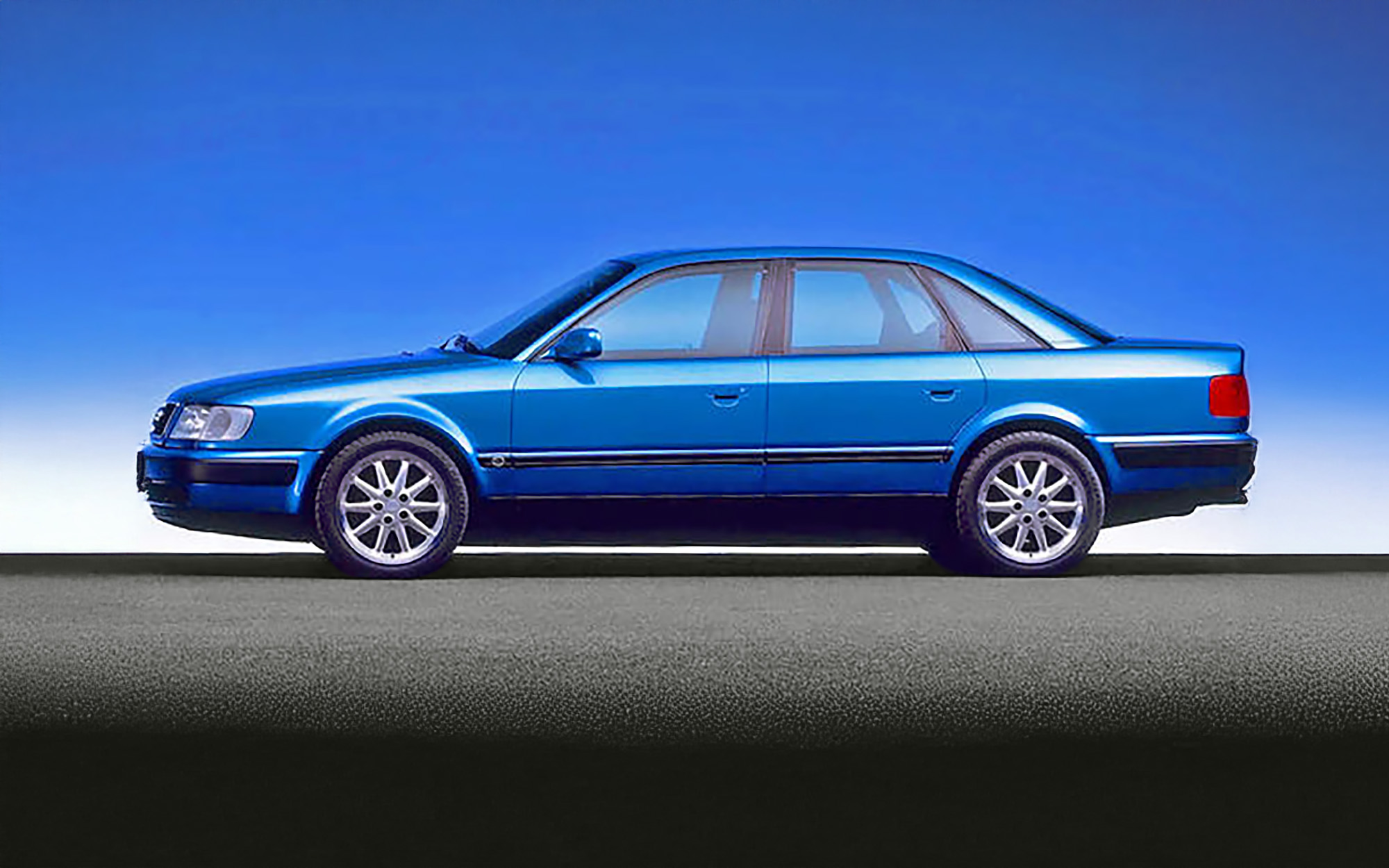One unintentional tradition of Audi is its complex relationship with naming conventions. This can challenge any time the vernacular of family nomenclature changes, and it gets even more complex when there’s overlap where something in one generation becomes something else entirely under the new order. Such is the case of the “ur” RS4, and even that hardly even begins to tell the story.
WHAT’S IN A NAME
Naming convention seems to come to the fore every few decades, and 2025 qualified as one of those times when the brand’s well-intentioned but ultimately flawed attempt to distinguish electric and combustion-powered models collapsed in confusion. It would seem what’s old is new again, because this sort of chaos has dogged Ingolstadt since the beginning… and long before an online peanut gallery had platforms on which to complain about it.
Even the brand name “Audi” was born out of a naming dispute—when founder August Horch lost the right to put his own surname on his cars, he turned to the Latin translation of “Horch,” which means “listen.” Thus, Audi.
The naming contradictions continued across the decades. When Audi unveiled the successor to the original quattro in 1990, it chose to dub the new performance model “Coupe quattro”, then “S2” when a turbocharged variant arrived. That car, based on the Audi 80, carried on the legend of the Sport quattro and S1 rally cars in road-going form. Soon after came the RS2 Avant without today’s space between letters and numbers. That car was developed in cooperation with Porsche, another German brand that leans heavily on the “RS” or RennSport theme. The hierarchy made sense—S for sport, RS for RennSport.. or perhaps Rally Sport since this is Audi after all. Ingolstadt’s never made that entirely clear.
But, then came the question of Audi’s larger executive models. What would you call a hotter version of the 100 series to slot in above the S2? In the decade of the 90s before the modern alphanumerics, the answer, of course, was S4. And it was here, hidden in this nomenclature fog, that the first Audi 100 RS4 quietly surfaced.
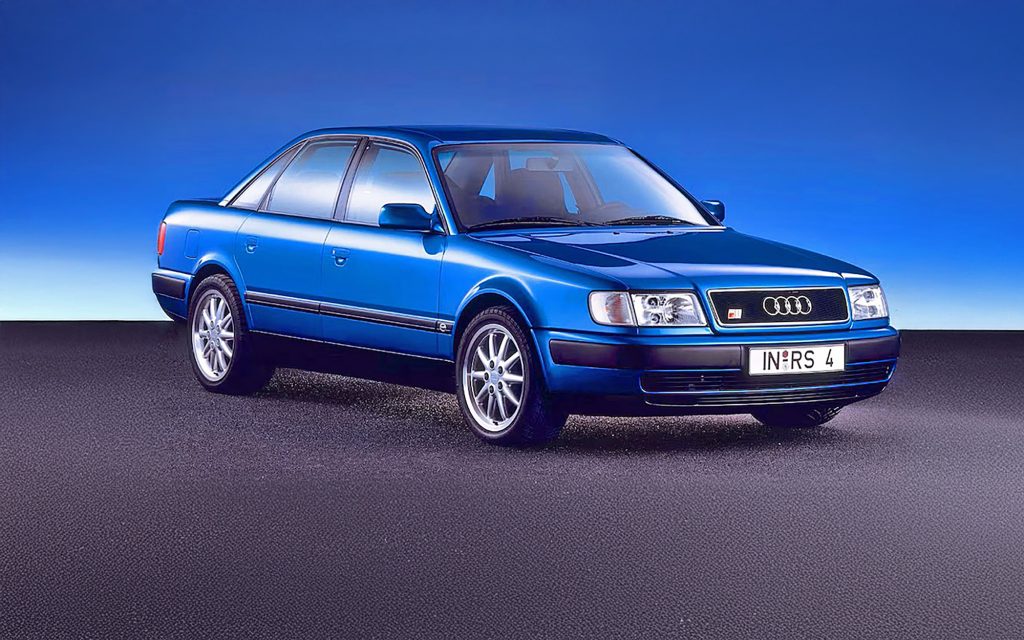
INCOGNITO SUPER SEDAN FROM INGOLSTADT
Strictly speaking, this Audi 100 RS4 has nothing to do with the B5-generation RS 4 Avant that hit the Audi stand at the 1999 Frankfurt IAA motor show. Instead, it was an early-1990s experiment—a true C4-generation Audi 100 that wore plain, conservative bodywork representing an era at the zenith of understatement. Even still, it promised world-class potency underneath. By every measure, it would have been the king of sleepers. Audi insiders suggested output comfortably over 300 horsepower—at a time when even a Porsche 911 Turbo managed “only” 320.
What engine would have powered this “ur” RS4 remains a mystery to this day. Period logic suggests three possibilities. The production S4 of the time could be ordered with a 2.2-liter turbocharged five-cylinder making 230 hp, or the newer 4.2-liter naturally aspirated V8 producing 280 hp, borrowed from the flagship Audi V8 sedan. Both had drawbacks: the five-cylinder wasn’t strong enough to justify an RS badge, while the V8 was heavier and never particularly popular among customers. That left a third, more compelling option—the 2.2-liter turbocharged five-cylinder engine Porsche had helped augment during the development of the RS2 Avant. That unit churned out 315 hp and 232 kW, and would have slotted neatly into the RS4 narrative, cementing the link between RS2 and RS4. With it, the car likely would have delivered 0–100 km/h in around five seconds flat and hit a governed 250 km/h.
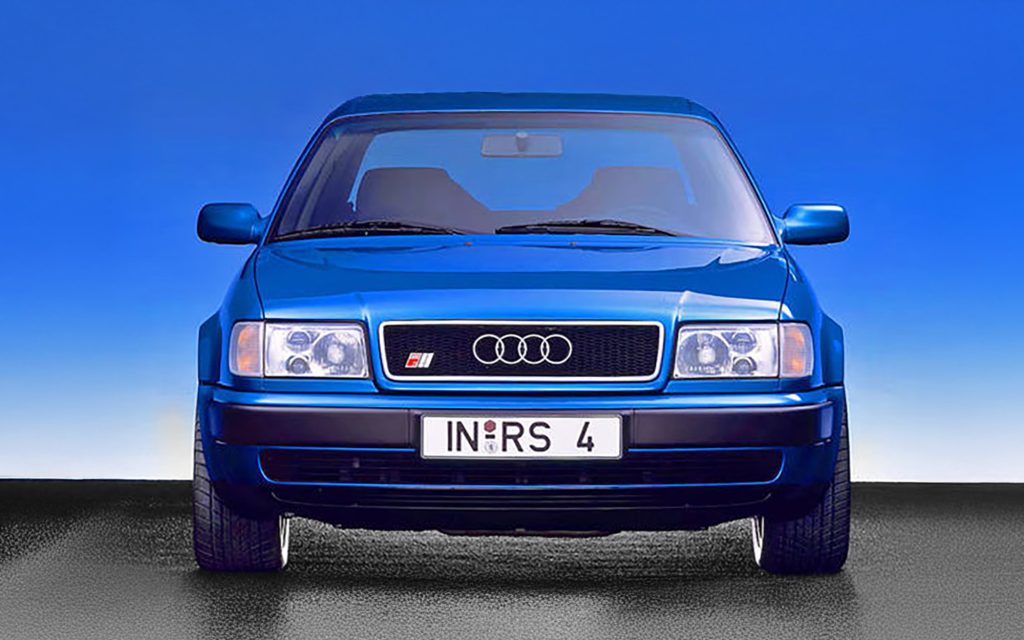
One thing not made clear in this story is whether, unlike the RS2, Porsche was involved in the 100 RS4. No doubt Audi executives were thinking of expansion of the RS2 that was also headed to market at the time, but this prototype lacks any real visual differentiators. Sure, it’s got what looks like Nogaro Blue paint or something very similar, but its bodywork appears to be straight-up 100 S4 spec, including the period-correct optional plus-sized 10-spoke wheels.
Why so subtle? Well, for starters, that’s not entirely inconsistent with the era. Visual differences between the plain 100 and the hotter S4 were similarly impossible to spot. Same goes for that period’s base 911 Carrera 2 and hottest Carrera RS over at Porsche.
Even still, the RS2 definitely wore its RS bonafides proudly. Admittedly, those were largely shared Porsche parts like 964 Cup 1 wheels, 964 mirrors and 968 bumper-mounted light assemblies. Back in the 90s though, you could spot the differences between a plain S2 and an RS2 from a mile away.
Maybe that was the point. This car was probably an evaluation prototype built by Audi’s development department. It’s not hard to imagine executives in that timeframe driving the thing home at night or roadtripping down to Salzburg over the weekend. Minus the telling registration plate, this car would have blended in quite easily.
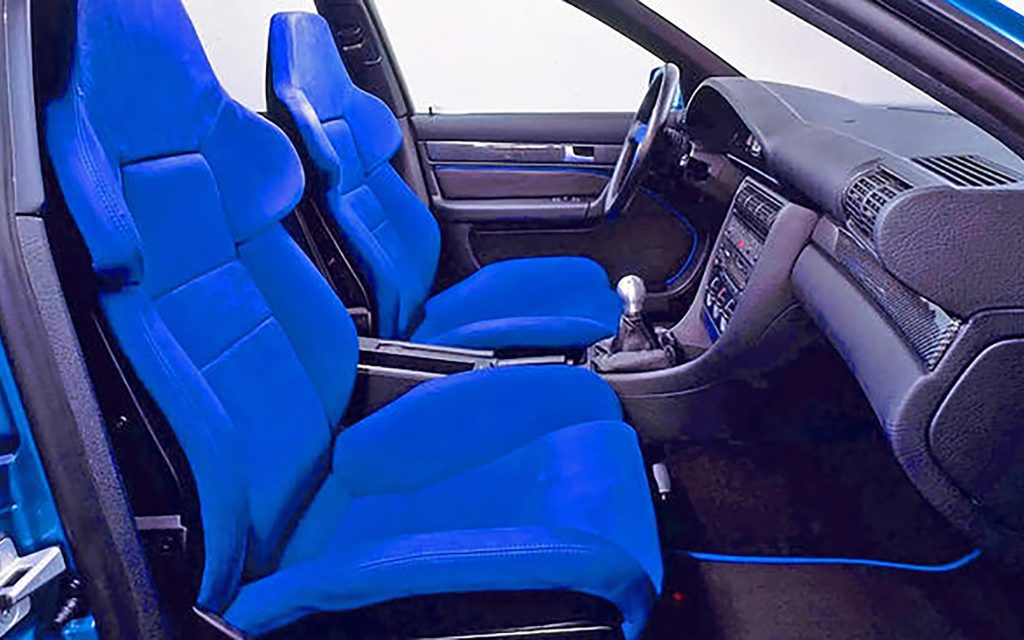
INSIDE THE PROTOTYPE
While conservative on the outside, it’s in the cabin of the RS4 where the car’s intentions are worn more on the sleeve… or perhaps seat. This was no ordinary 100. Standard seats were ditched for intensely blue bucket seats featuring high bolsters. Perforated aluminum pedals, a somewhat aftermarket-looking aluminum gear knob, and a familiar Nardi steering wheel RS2 fans will remember—all color-matched and stripped of an airbag—spoke to motorsport inspiration. This was not luxury first; this was driver-focused hardware meant to encourage spirited use.
Even so, this was Audi in the early ’90s, and that meant safety engineering had to be part of the equation. Unfortunately, this took the form of Procon-ten, an infamous cable-and-pulley crash-protection system. In an accident, steel cables would yank the steering wheel, engine, transmission, and even the B-pillars out of harm’s way. In practice, it often left the car a total write-off even after a minor impact. That odd mix of safety obsession and performance intent defined the Audi ethos of the time—and it was baked into this RS4 prototype.
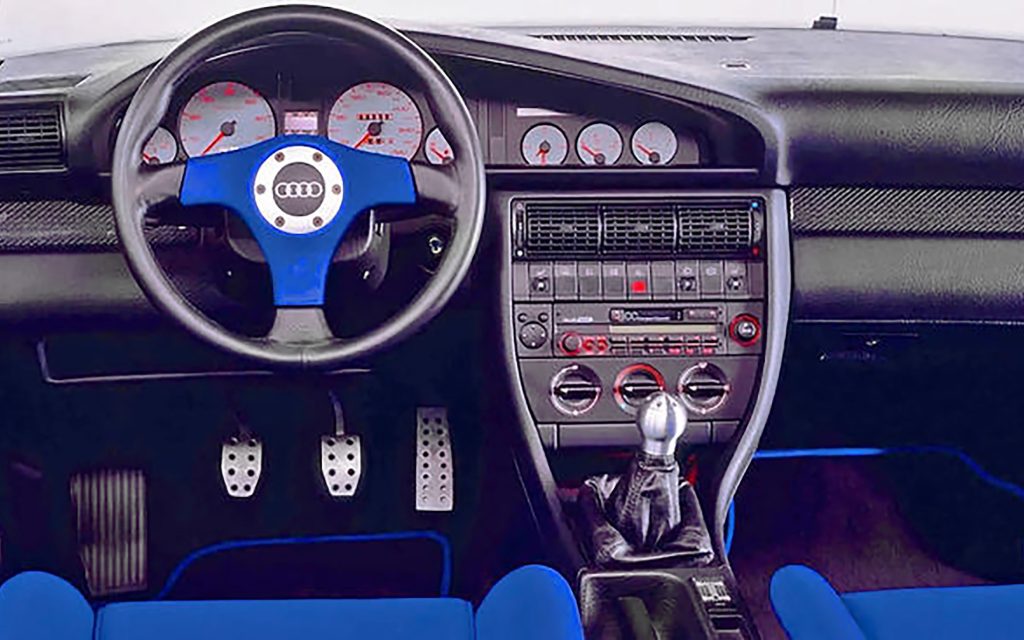
ONE THAT GOT AWAY
Despite its promising form, the Audi 100 RS4 never made it to showrooms. Decision-makers in Ingolstadt ultimately pivoted toward the V8 formula. S4s began to be fitted with the same 4.2 V8 from Audi’s aging V8 (D1) flagship, with that formula being made much more special following the facelift and “A6/S6” name change and becoming the S6 Plus. That car used a 4.2-liter V8 tuned to 326 hp, making it the first Audi product developed by the newly formed quattro GmbH (the skunkworks that would later evolve into Audi Sport GmbH).
The S6 Plus effectively closed the chapter on the C4 generation while laying the groundwork for the legendary RS 6 lineage. Meanwhile, the RS 4 name would reemerge years later when Audi pulled the wraps off of their own RS2 successor developed without Porsche’s assistance. It’s that B5-generation RS 4 that would cement the model as an enthusiast favorite and performance car legend.
Looking back, the 100 RS4 is an intriguing “what if” story. Had it gone into production, it might have expanded Audi’s RS legacy years earlier and given Ingolstadt a true rival to the contemporaneous big body performance rivals from Mercedes-Benz and BMW, all wrapped in understated executive car sheetmetal. Instead, it remained a mothballed project—one more piece of Audi’s history where nomenclature, timing, and internal politics got in the way.
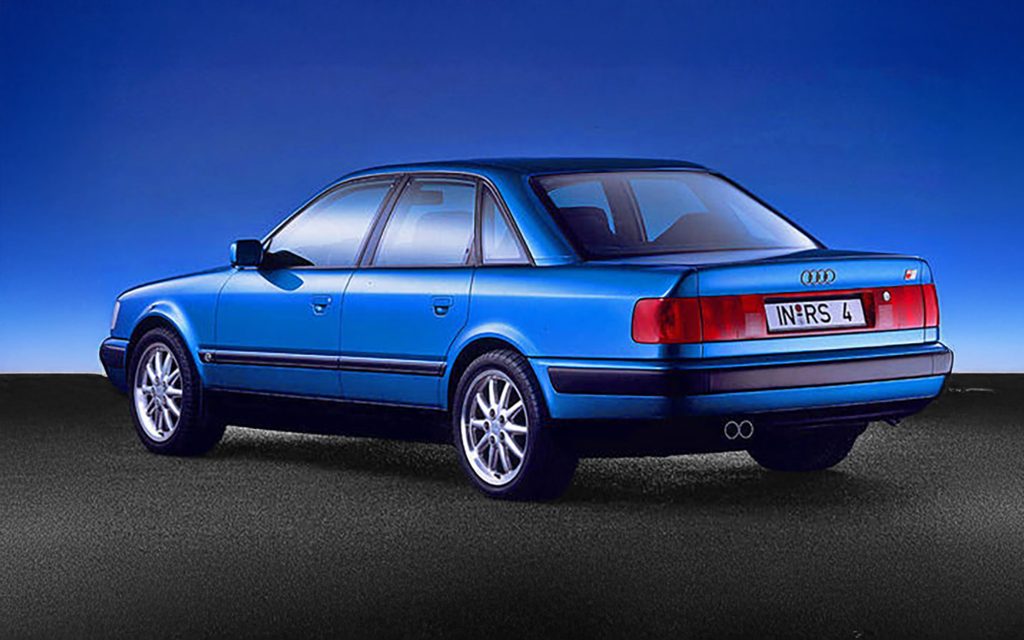
LESSONS OF A LOST RS
Today, as Audi wrestles with yet another naming challenge and prepares for an electrified future, the tale of the 100 RS4 feels oddly relevant. The RS4 badge, once associated with potent five-cylinders and high-revving V8s, is now destined for a fully electric application. That future car is still years from production as of 2025, leaving enthusiasts to ponder what’s been lost along the way.
The Audi 100 RS4 proves that Ingolstadt has always had bold ideas. Some become icons. Others never make it past the design study. But each one reminds us that Audi’s history is richer—and more complicated—than its sometimes-confusing badges suggest.
SPECIAL THANKS TO AUTO ZEITUNG
I like to think of myself as pretty hard to surprise when it comes to Audi brand knowledge. It’s hard to really raise my eyebrows with something I’ve never seen, but that doesn’t mean it doesn’t happen. In this case, I was schooled by the classiccars department at German automotive publication Auto Zeitung. They deserve credit for rediscovering and revisiting the ur RS4. You can see their own German language story HERE. Credit to my friends at Audi who also gave me permission to run the attached photos of the 100 S4.


